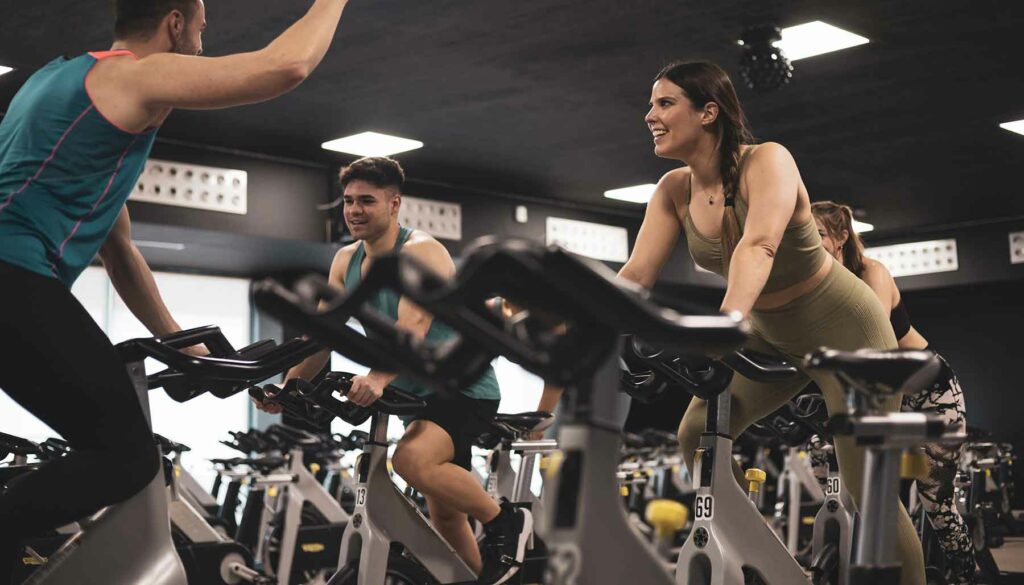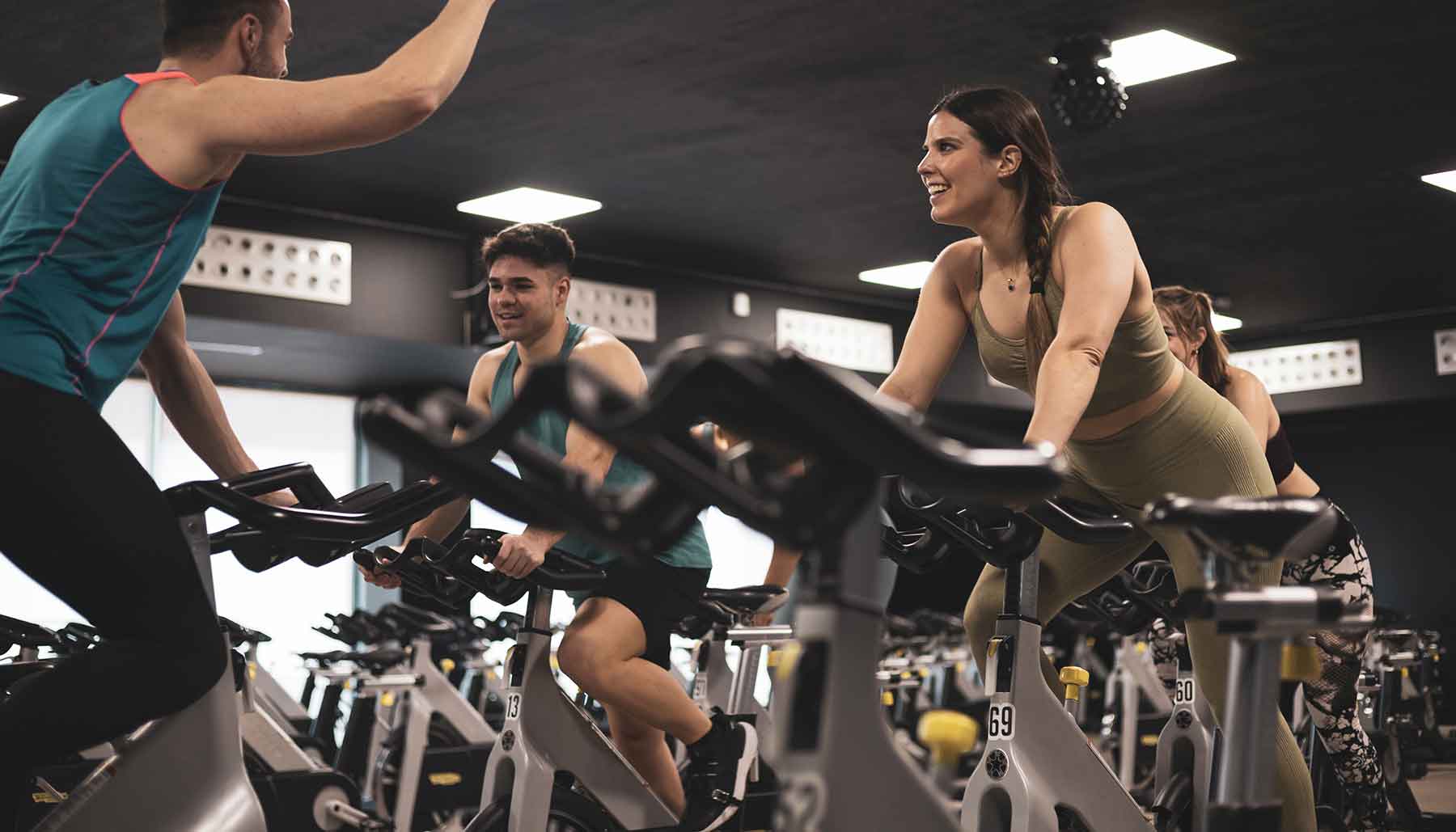Getting in a good workout is supposed to be good for your health. Staying active can help you live a longer, better life, right?
But over-exerting yourself can have adverse effects. In fact, it could be deadly. Read on to find out why doing too much can hurt more than it helps.
This Woman Almost Lost Her Leg After Spin Class
I’m sure we’ve all had that “no pain, no gain” phrase burned into our brains by now. This motto promises that if you push through the pain and do the hard work, you’ll see greater results. Just five more push-ups, right? But if you push well past your body’s limit, “no pain, no gain” turns into a potentially dangerous situation.

That’s exactly what happened to a Massachusetts woman following a spin class.
23-year-old Kaelyn Franco decided to try out a spin class in 2021. As someone who played sports her whole life and regularly rode bikes, she thought it would be a fun way to work out while it was too cold to ride outside. The 45-minute spin class was her first ever.
“I was definitely pushing myself for sure,” Franco recalled. “But I don’t think I was overworking myself to the point where I was like, OK I really overdid it.”
When she stepped off the bike, though, her knees gave out. Understandably, she just assumed her muscles were tired from working hard in class. Starting the day after, her leg muscles started to feel “tense” and swell. The soreness became painful, and she was having trouble walking. After the color of her urine started to change, she decided to go to the hospital.
Tests revealed an extremely high amount of a particular enzyme, creatine kinase, and it was a signal of muscle damage.
She had a case of rhabdomyolysis. It’s a relatively rare condition, but one of the causes is injury from overexertion. She had unknowingly done it to herself under the guise of pushing herself to work harder.
Related: Unique Fitness Classes You Haven’t Tried Yet
What is Rhabdomyolysis?
Rhabdomyolysis, or rhabdo for short, is a serious medical condition. It occurs after a direct or indirect muscle injury, the latter of which can be caused by excessive exercise without rest. The condition causes the breakdown of muscle tissues and the release of muscle fiber contents into the bloodstream.
These are the components of your muscles that leak into the blood:
- Myoglobin
- Potassium
- Phosphate
- Creatine kinase
- Urate

If caught early enough, the condition is treatable with an IV drip. The extra fluids help flush out the toxic compounds from the bloodstream. If left untreated, though, severe cases of rhabdomyolysis could be fatal or result in permanent disability. That’s because the released proteins of your muscle fibers can cause abnormal heart rhythms, cardiac arrest, kidney damage, or kidney failure. Less commonly, some develop problems with their liver.
Symptoms of rhabdo can be hard to pinpoint. Depending on the cause, the course of the condition varies. Also, symptoms may only occur in one area of the body, or show up in early or later stages.
The most common symptoms that people experience include these:
- Muscle pain, or tender and sore muscles that worsen over the course of a few days
- Muscle swelling
- Muscle weakness or trouble moving/using muscles
- Dark red or brown urine caused by the excess proteins
Other common symptoms of rhabdo might include:
- Rapid heart rate
- Fever
- Abdominal pain
- Nausea or vomiting
- Dehydration
- Confusion
- Unconsciousness
Franco was given an IV drip to flush out the excess muscle proteins from her body. This is the main treatment for the condition. However, severe cases of rhabdomyolysis can also lead to compartment syndrome, a condition that occurs after IV fluid treatment. Think of compartment syndrome as a secondary complication to rhabdo.
The pressure in her muscles built up to dangerous levels, decreasing the blood flow. Surgery was required to release that pressure. And without it, Franco would have lost her leg entirely.
As it turns out, Franco wasn’t the first to nearly lose her leg – or her life – after attending a spin class. Several cases have been reported over the years. In fact, there’s been enough of a rise in spin class-related rhabdomyolysis that it’s been studied and written about.
Unfortunately, the news of rising cases of rhabdo hadn’t been talked about enough for Franco to know about it. And I’m sure that also applies to plenty of other people around the world.
You Don’t Have to Skip Spin Class

There is no reason to avoid a good spin class. Not only is it a great cardio workout that’s good for heart health and burning calories, but it can also help build up muscle strength in your lower body. It’s also relatively easy on your joints when compared to other exercises.
Especially if you are new to it, it’s important to ease in and give your body time to adapt to the intensity.
After all, it might look like a similar workout as regular outdoor cycling or riding a stationary bike, but it can be far more intense. There is no slowing down to pay attention to surroundings or traffic. It’s riding hard right from the start. This makes it incredibly easy for newbies to overexert themselves.
The key is listening to your body more than you’re listening to the blaring music in the spin class studio.
Related: Fitness Myths You Need to Stop Believing Will Give You Results













